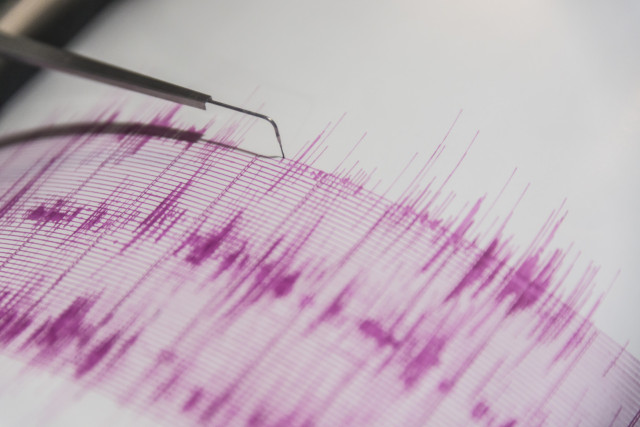
© Joeofamerica.com
Earthquakes rattled residents in Oklahoma on Saturday, the latest in a series that have put the state on track for record quake activity this year, which some seismologists say may be tied to oil and gas exploration.
One earthquake recorded at 3.8 magnitude by the U.S. Geological Survey rocked houses in several communities around central Oklahoma at 7:42 a.m. local time. Another about two hours earlier in the same part of the state, north of Oklahoma City, was recorded at 2.9 magnitude, USGS said.
Those two were preceded by two more, at 2.6 magnitude, and 2.5 magnitude, that also rolled the landscape in central Oklahoma early Saturday morning. A 3.0 magnitude tremor struck late Friday night in that area as well, following a 3.4 magnitude hit Friday afternoon.
Austin Holland, a seismologist with the Oklahoma Geological Survey who tracks earthquake activity for the USGS, said the earthquake activity in the state is soaring.
"We have had almost as many magnitude 3 and greater already in 2014 than we did for all of 2013," Holland said.
Last year's number of "felt" earthquakes - those strong enough to rattle items on a shelf - hit a record 222 in the state. This year, less than four months into the year, the state has recorded 253 such tremors, according to state seismic data.
"We have already crushed last year's record for number of earthquakes," Holland said.
Most earthquakes occur naturally. But scientists have long linked some small earthquakes to oil and gas work underground, which can alter pressure points and cause shifts in the earth.
Oil and gas exploration has increased in recent years across the country, spurred by U.S. efforts for energy independence. Modern hydraulic fracturing, or fracking, is one particularly controversial technique.
For bigger quakes, so far this year the state has recorded 106 at 3.0 magnitude and above, according to Holland. For all of last year the state had 109 at 3.0 and above.
In November 2011, Oklahoma suffered a 5.6 magnitude quake that damaged more than a dozen homes and several businesses.
Wastewater disposal related to the fracking is suspected by many scientists to contribute to the earthquake activity. Millions of gallons of wastewater are typically trucked from a fracking site to wells where the water is injected thousands of feet underground into porous rock layers. That work, if done near a fault, can trigger larger quakes, according to several recent scientific studies.
Oklahoma recorded 278 earthquakes from 2008 through 2013 that have registered on the Richter scale at a magnitude of 3.0 or greater, a level that can shake objects inside a home.
Before that, from 1975-2008, the state on average recorded less than six earthquakes a year.
(Reporting by Carey Gillam; Editing by Dan Grebler)Source: Reuters

Reader Comments